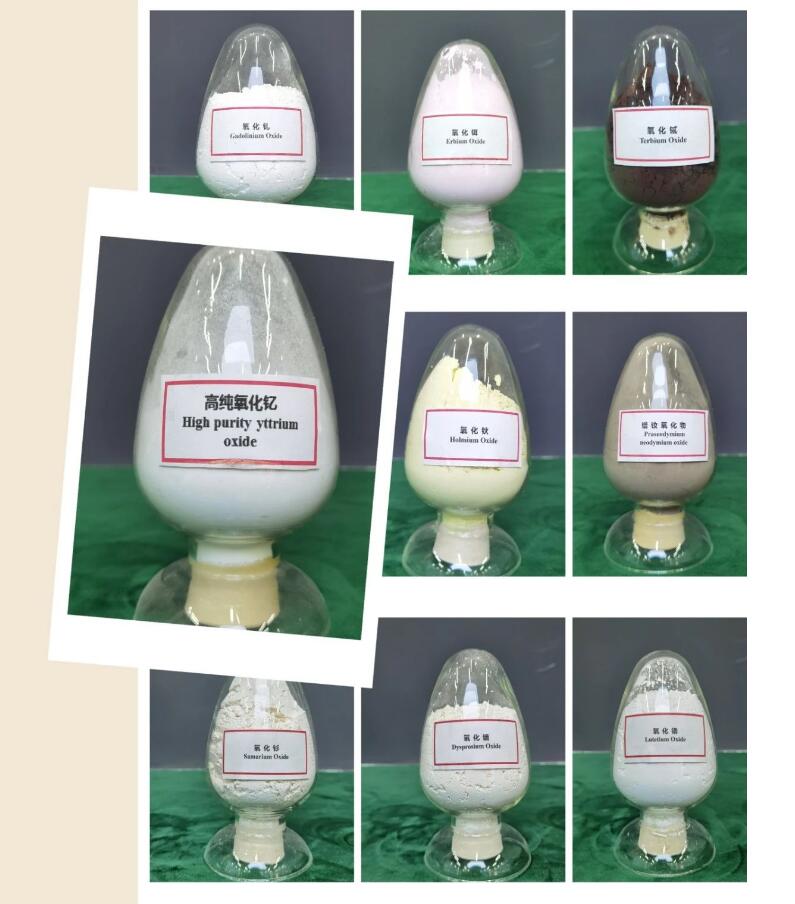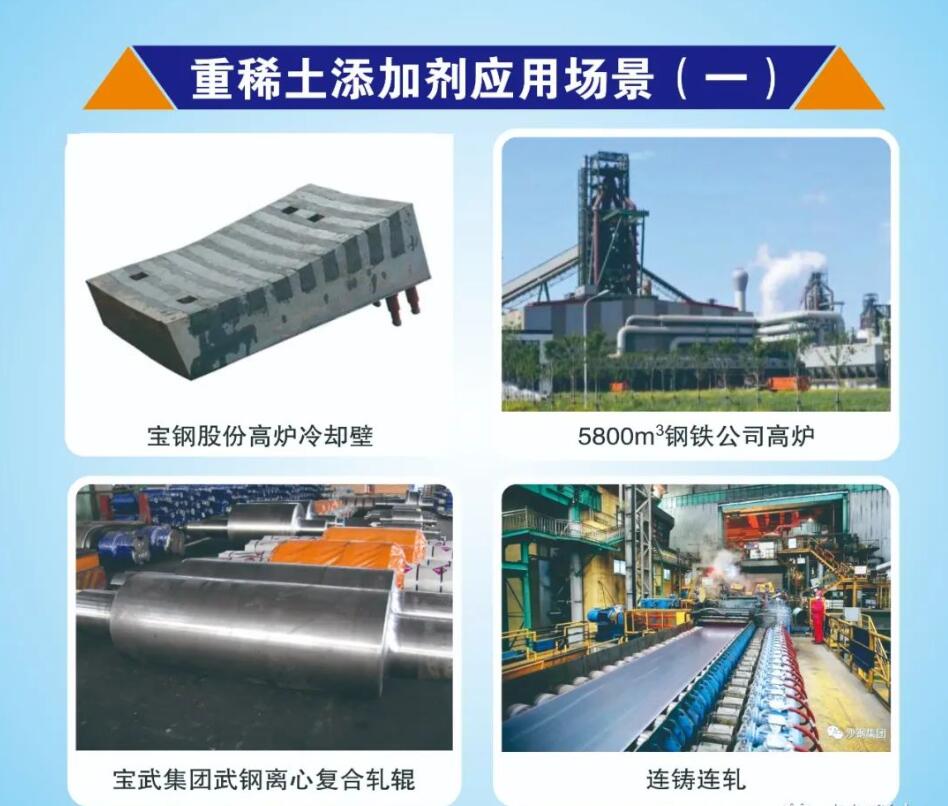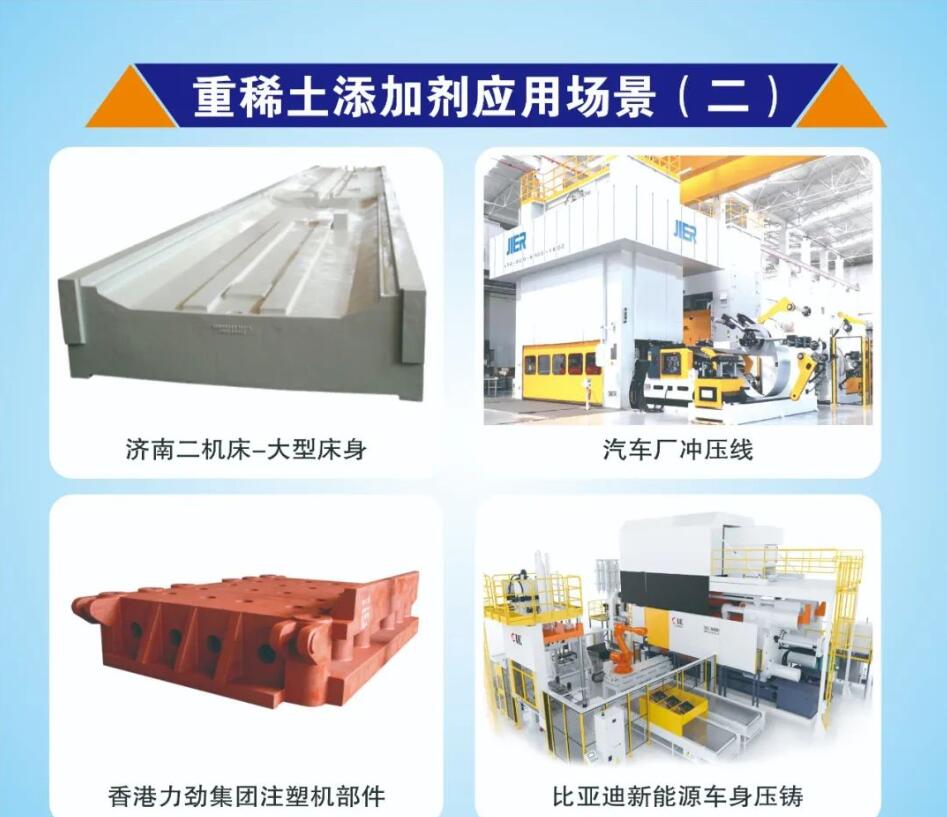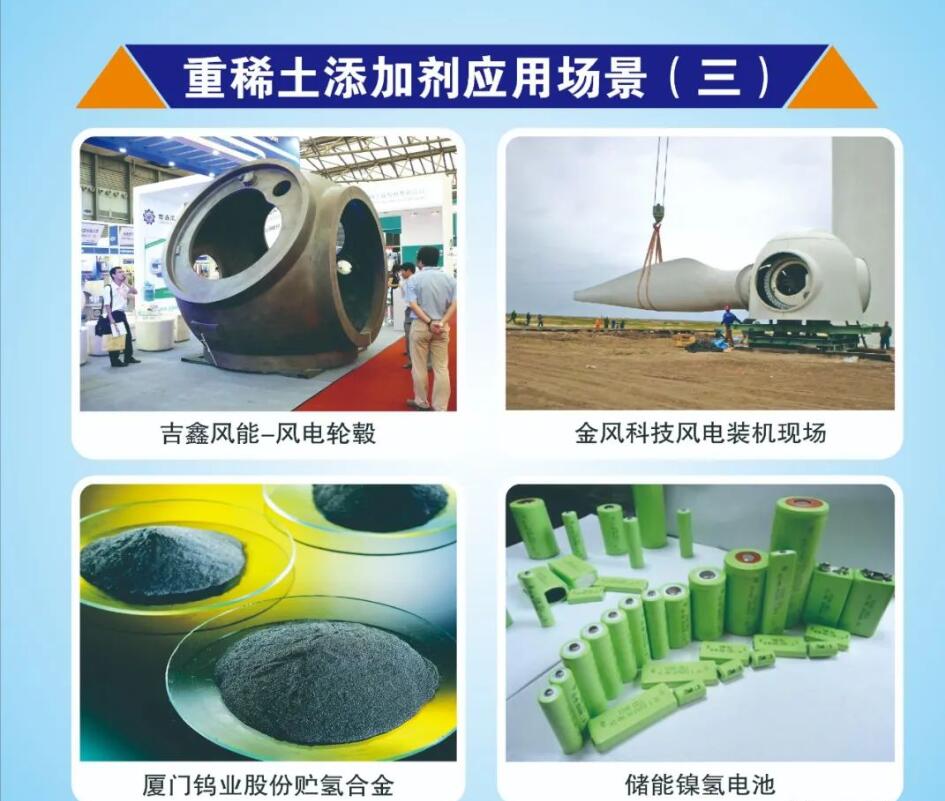Application of Rare Earth Materials in Modern Military Technology
Application of Rare Earth Materials in Modern Military Technology
As a special functional material, rare earth, known as the “treasure house” of new materials, can greatly improve the quality and performance of other products, and is known as the “vitamin” of modern industry. It is not only widely used in traditional industries such as metallurgy, petrochemical industry, glass ceramics, wool spinning, leather and agriculture, but also plays an indispensable role in the fields of materials such as fluorescence, magnetism, laser, Fiber-optic communication, hydrogen storage energy, superconductivity, etc, It directly affects the speed and level of development of emerging high-tech industries such as Optical instrument, electronics, aerospace, nuclear industry, etc. These technologies have been successfully applied in military technology, greatly promoting the development of modern military technology.
The special role played by rare earth new materials in modern military technology has widely attracted the attention of governments and experts from various countries, such as being listed as a key element in the development of high-tech industries and military technology by relevant departments in the United States, Japan, and other countries.
A Brief Introduction to Rare Earths and Their Relationship with Military and National Defense
Strictly speaking, all rare earth elements have certain military uses, but the most critical role in national defense and military fields should be the application of laser ranging, laser guidance, laser communication and other fields.
Application of Rare Earth Steel and Nodular Cast Iron in Modern Military Technology
1.1 Application of Rare Earth Steel in Modern Military Technology
Its functions include purification, modification, and alloying, mainly including desulfurization, deoxidation, and gas removal, eliminating the influence of low melting point harmful impurities, refining grain and structure, affecting the phase transition point of steel, and improving its hardenability and mechanical properties. Military science and technology personnel have developed many rare earth materials suitable for use in weapons by utilizing this property of rare earth.
1.1.1 Armor steel
As early as the early 1960s, China’s weapons industry began research on the application of rare earths in armor steel and gun steel, and successively produced rare earth armor steel such as 601, 603, and 623, ushering in a new era where key raw materials in China’s tank production were based domestically.
1.1.2 Rare earth carbon steel
In the mid-1960s, China added 0.05% rare earth elements to the original high-quality carbon steel to produce rare earth carbon steel. The lateral impact value of this rare earth steel has increased by 70% to 100% compared to the original carbon steel, and the impact value at -40 ℃ has increased by nearly twice. The large-diameter cartridge made of this steel has been proven through shooting tests in the shooting range to fully meet the technical requirements. Currently, China has been finalized and put into production, achieving China’s long-standing wish to replace copper with steel in cartridge materials.
1.1.3 Rare earth high manganese steel and rare earth cast steel
The rare earth high manganese steel is used to manufacture tank track shoes, and the rare earth cast steel is used to manufacture the tail wings, muzzle brake and artillery structural parts of high-speed Armour-piercing discarding sabot, which can reduce processing procedures, improve the utilization rate of steel, and achieve tactical and technical indicators.
In the past, the materials used for the front chamber projectile bodies in China were made of semi rigid cast iron with high-quality pig iron added with 30% to 40% scrap steel. Due to its low strength, high brittleness, low and non sharp number of effective fragments after explosion, and weak killing power, the development of the front chamber projectile body was once hindered. Since 1963, various calibers of mortar shells have been manufactured using rare earth ductile iron, which has increased their mechanical properties by 1-2 times, multiplied the number of effective fragments, and sharpened the sharpness of the fragments, greatly enhancing their killing power. The effective number of fragments and intensive killing radius of a certain type of Cannon shell and Field gun shell made of this material in China are slightly better than those of steel shells.
Application of non-ferrous rare earth alloys such as magnesium and aluminum in modern military technology
Rare earth has high chemical activity and large Atomic radius. When it is added to non-ferrous metals and their alloys, it can refine grains, prevent segregation, degassing, impurity removal and purification, and improve metallographic structure, so as to achieve the comprehensive purpose of improving mechanical properties, physical properties and processing properties. Materials workers at home and abroad have developed new rare earth magnesium alloys, aluminum alloys, titanium alloys, and superalloys by using this property of rare earth. These products have been widely used in modern military technologies such as fighter aircraft, assault aircraft, helicopters, unmanned aerial vehicles, and missile satellites.
2.1 Rare earth magnesium alloy
Rare earth magnesium alloys have high specific strength, can reduce aircraft weight, improve tactical performance, and have broad application prospects. The rare earth magnesium alloys developed by China Aviation Industry Corporation (hereinafter referred to as AVIC) include approximately 10 grades of cast magnesium alloys and deformed magnesium alloys, many of which have been used in production and have stable quality. For example, ZM 6 cast magnesium alloy with rare earth metal neodymium as the main additive has been expanded to be used for important parts such as helicopter rear reduction casings, fighter wing ribs, and rotor lead pressure plates for 30 kW generators. The rare earth high-strength magnesium alloy BM 25 jointly developed by AVIC Corporation and Nonferrous Metals Corporation has replaced some medium strength aluminum alloys and has been applied in impact aircraft.
2.2 Rare earth titanium alloy
In the early 1970s, the Beijing Institute of Aeronautical Materials (referred to as the Institute of Aeronautical Materials) replaced some aluminum and silicon with rare earth metal cerium (Ce) in Ti-A1-Mo titanium alloys, limiting the precipitation of brittle phases and improving the alloy’s heat resistance while also improving its thermal stability. On this basis, a high-performance cast high-temperature titanium alloy ZT3 containing cerium was developed. Compared with similar international alloys, it has certain advantages in terms of heat resistance strength and process performance. The compressor casing manufactured with it is used for the W PI3 II engine, with a weight reduction of 39 kg per aircraft and an increase in thrust to weight ratio of 1.5%. In addition, the reduction of processing steps by about 30% has achieved significant technical and economic benefits, filling the gap in the use of cast titanium casings for aviation engines in China at 500 ℃. Research has shown that there are small cerium oxide particles in the microstructure of ZT3 alloy containing cerium. Cerium combines a portion of oxygen in the alloy to form a refractory and high hardness rare earth oxide material, Ce2O3. These particles hinder the movement of dislocations during the alloy deformation process, improving the high-temperature performance of the alloy. Cerium captures a portion of gas impurities (especially at grain boundaries), which may strengthen the alloy while maintaining good thermal stability. This is the first attempt to apply the theory of difficult solute point strengthening in cast titanium alloys. In addition, the Institute of Aeronautical Materials has developed stable and cheap Yttrium(III) oxide sand and powder through years of research and special mineralization treatment technology in the titanium alloy solution precision casting process. It has reached a better level in terms of specific gravity, hardness and stability to titanium liquid, and has shown greater advantages in adjusting and controlling the performance of shell slurry. The outstanding advantage of using Yttrium(III) oxide shell to manufacture titanium castings is that under the condition that the casting quality and process level are equivalent to the tungsten coating process, titanium alloy castings thinner than the tungsten coating process can be manufactured. At present, this process has been widely used in the manufacturing of various aircraft, engine, and civilian castings.
2.3 Rare earth aluminum alloy
The heat-resistant cast aluminum alloy HZL206 developed by AVIC has superior high-temperature and room temperature mechanical properties compared to foreign alloys containing nickel, and has reached the advanced level of similar alloys abroad. It is now used as a pressure resistant valve for helicopters and fighter jets with a working temperature of 300 ℃, replacing steel and titanium alloys. The structural weight has been reduced and has been put into mass production. The tensile strength of rare earth aluminum silicon hypereutectic ZL117 alloy at 200-300 ℃ exceeds that of West German piston alloys KS280 and KS282. Its wear resistance is 4-5 times higher than that of commonly used piston alloys ZL108, with a small coefficient of linear expansion and good dimensional stability. It has been used in aviation accessories KY-5, KY-7 air compressors, and aviation model engine pistons. Adding rare earth elements to aluminum alloys significantly improves microstructure and mechanical properties. The mechanism of action of rare earth elements in aluminum alloys is: formation of dispersed distribution, with small aluminum compounds playing a significant role in strengthening the second phase; The addition of rare earth elements plays a degassing Catharsis role, thereby reducing the number of pores in the alloy and improving the performance of the alloy; Rare earth aluminum compounds serve as heterogeneous nuclei to refine grains and eutectic phases, and are also a modifier; Rare earth elements promote the formation and refinement of iron rich phases, reducing their harmful effects. α— The solid solution amount of iron in A1 decreases with the increase of rare earth addition, which is also beneficial for improving strength and plasticity.
The Application of Rare Earth Combustion Materials in Modern Military Technology
3.1 Pure rare earth metals
Pure rare earth metals, due to their active chemical properties, are prone to react with oxygen, sulfur, and nitrogen to form stable compounds. When subjected to intense friction and impact, sparks can ignite flammable substances. Therefore, as early as 1908, it was made into flint. It has been found that among the 17 rare earth elements, six elements, including cerium, lanthanum, neodymium, praseodymium, samarium, and yttrium, have particularly good arson performance. People have made various incendiary weapons based on the arson properties of rare earth metals. For example, the 227 kg American “Mark 82″ missile uses rare earth metal liners, which not only produce explosive killing effects but also arson effects. The US air-to-ground “damping man” rocket warhead is equipped with 108 rare earth metal square rods as liners, replacing some prefabricated fragments. Static explosion tests have shown that its ability to ignite aviation fuel is 44% higher than that of unlined ones.
3.2 Mixed rare earth metals
Due to the high price of pure rare earth metals, low-cost composite rare earth metals are widely used in combustion weapons in various countries. The composite rare earth metal combustion agent is loaded into the metal shell under high pressure, with a combustion agent density of (1.9~2.1) × 103 kg/m3, combustion speed 1.3-1.5 m/s, flame diameter of about 500 m m, and flame temperature up to 1715-2000 ℃. After combustion, the incandescent body remains hot for more than 5 minutes. During the invasion of Vietnam, the US military used launchers to launch a 40mm arson grenade, which was filled with a igniting lining made of mixed rare earth metal. After the projectile explodes, each fragment with a igniting lining can ignite the target. At that time, the monthly production of the bomb reached 200000 rounds, with a maximum of 260000 rounds.
3.3 Rare earth combustion alloys
The rare earth combustion alloy with a weight of 100g can form 200~3000 kindlings, covering a large area, which is equivalent to the killing radius of Armour-piercing ammunition and armour piercing projectile. Therefore, the development of multifunctional ammunition with combustion power has become one of the main directions of ammunition development at home and abroad. For the Armour-piercing ammunition and armour piercing projectile, their tactical performance requires that after piercing the armor of the enemy tank, they can ignite their fuel and ammunition to completely destroy the tank. For grenades, it is required to ignite military supplies and strategic facilities within their killing range. It is reported that a plastic rare earth metal Incendiary device made in the Made in USA is made of glass fiber reinforced nylon with a mixed rare earth alloy cartridge inside, which has better effect against aviation fuel and similar targets.
Application of Rare Earth Materials in Military Protection and Nuclear Technology
4.1 Application in Military Protection Technology
Rare earth elements have radiation resistant properties. The National Neutron cross section Center of the United States has made two kinds of plates with a thickness of 10 mm by using polymer materials as the base material, with or without the addition of rare earth elements, for radiation protection tests. The results show that the thermal neutron shielding effect of rare earth polymer materials is 5-6 times better than that of rare earth free polymer materials. Among them, the rare earth materials with Sm, Eu, Gd, Dy and other elements have the largest neutron Absorption cross section and good neutron capture effect. At present, the main applications of rare earth radiation protection materials in military technology include the following aspects.
4.1.1 Nuclear radiation shielding
The United States uses 1% boron and 5% rare earth elements gadolinium, samarium and lanthanum to make a 600mm thick radiation proof concrete for shielding the fission Neutron source of the swimming pool reactor. France developed a rare earth radiation protection material by adding Boride, rare earth compound or rare earth alloy to graphite as the base material. The filler of this composite shielding material is required to be evenly distributed and made into prefabricated parts, which are placed around the reactor channel according to the different requirements of the shielding area.
4.1.2 Tank thermal radiation shielding
It consists of four layers of veneer, with a total thickness of 5-20 cm. The first layer is made of glass fiber reinforced plastic, with inorganic powder added with 2% rare earth compounds as fillers to block fast neutrons and absorb slow neutrons; The second and third layers add boron graphite, polystyrene, and rare earth elements accounting for 10% of the total filler in the former to block intermediate energy neutrons and absorb thermal neutrons; The fourth layer uses graphite instead of glass fiber, and adds 25% rare earth compounds to absorb thermal neutrons.
4.1.3 Others
Applying rare earth radiation resistant coatings to tanks, ships, shelters, and other military equipment can have a radiation resistant effect.
4.2 Application in Nuclear Technology
Rare earth Yttrium(III) oxide can be used as a combustible absorber of uranium fuel in Boiling water reactor (BWR). Among all elements, gadolinium has the strongest ability to absorb neutrons, with approximately 4600 targets per atom. Each natural gadolinium atom absorbs an average of 4 neutrons before failure. When mixed with fissionable uranium, gadolinium can promote combustion, reduce uranium consumption, and increase energy output. Unlike Boron carbide, Gadolinium(III) oxide does not produce deuterium, a harmful by-product. It can match both uranium fuel and its coating material in Nuclear reaction. The advantage of using gadolinium instead of boron is that gadolinium can be directly mixed with uranium to prevent nuclear fuel rod expansion. According to statistics, there are 149 nuclear reactors planned to be built around the world, 115 of which are pressurized water reactors using rare earth Gadolinium(III) oxide. Rare earth samarium, europium, and dysprosium have been used as neutron absorbers in neutron breeder reactors. Rare earth yttrium has a small capture cross-section in neutrons and can be used as a pipe material for molten salt reactors. The thin foil added with rare earth gadolinium and dysprosium can be used as a neutron field detector in aerospace and nuclear industry engineering, a small amount of rare earth thulium and erbium can be used as the target material of sealed tube Neutron generator, and rare earth europium oxide iron cermet can be used to make an improved reactor control support plate. Rare earth gadolinium can also be used as a coating additive to prevent neutron bomb radiation, and armored vehicles coated with a special coating containing gadolinium oxide can prevent neutron radiation. Rare earth ytterbium is used in equipment for measuring ground stress caused by underground nuclear explosions. When rare earth ytterbium is subjected to force, the resistance increases, and the change in resistance can be used to calculate the pressure applied. Linking rare earth gadolinium foil deposited and interleaved with a stress sensitive element can be used to measure high nuclear stress.
Application of 5 Rare Earth Permanent Magnet Materials in Modern Military Technology
The rare earth permanent magnet material, known as the new generation of magnetic king, is currently the highest comprehensive performance permanent magnet material known. It has more than 100 times higher magnetic properties than the magnetic steel used in military equipment in the 1970s. At present, it has become an important material in modern electronic technology communication. It is used in Traveling-wave tube and circulators in artificial earth satellites, radars and other aspects. Therefore, it has important military significance.
SmCo magnets and NdFeB magnets are used for electron beam focusing in the Missile guidance system. Magnets are the main focusing devices of the electron beam, which transmit data to the control surface of the missile. There are approximately 5-10 pounds (2.27-4.54 kg) of magnets in each focusing guidance device of the missile. In addition, rare earth magnets are also used to drive motors and rotate the Rudder#Aircraft rudders of guided missiles. Their advantages are stronger magnetism and lighter weight than the original Al Ni Co magnets.
Application of Rare Earth Laser Materials in Modern Military Technology
Laser is a new type of light source that has good monochromaticity, directionality, and coherence, and can achieve high brightness. Laser and rare earth laser materials were born simultaneously. So far, approximately 90% of laser materials involve rare earths. For example, Yttrium aluminium garnet crystal is a widely used laser that can obtain continuous high power output at room temperature. The application of solid-state lasers in modern military includes the following aspects.
6.1 Laser ranging
The neodymium doped yttrium aluminum garnet developed in the United States, Britain, France, Germany and other countries can measure a distance of 4000~20000 m with an accuracy of 5 m. The weapons systems such as the US MI, Germany’s Leopard II, France’s Lecler, Japan’s Type 90, Israel’s Mekava, and the latest British Challenger 2 tank all use this type of laser rangefinder. At present, some countries are developing a new generation of solid state laser rangefinders for human eye safety, with operating wavelengths ranging from 1.5 to 2.1 μ M. The hand-held laser rangefinder developed by the United States and the United Kingdom using the holmium doped Yttrium lithium fluoride laser has a working band of 2.06 μ M, ranging up to 3000 m. The United States and the International Laser Company also jointly used the erbium-doped Yttrium lithium fluoride laser and developed a wavelength of 1.73 μ M’s laser rangefinder and heavily equipped troops. The laser wavelength of China’s military rangefinders is 1.06 μ M, ranging from 200 to 7000 m. In launching long-range rockets, missiles and test communication satellites, China has obtained important data in range measurement through Laser TV Theodolite.
6.2 Laser Guidance
Laser guided bombs use lasers for terminal guidance. The target is irradiated with a Nd · YAG laser that emits dozens of pulses per second. The pulses are encoded, and the light pulses can guide the missile response, thereby preventing interference from missile launch and obstacles set by the enemy. For example, the US military GBV-15 Glide bomb called “smart bomb”. Similarly, it can also be used to manufacture laser guided shells.
6.3 Laser communication
In addition to Nd · YAG can be used for laser communication, the laser output of lithium tetra Neodymium(III) phosphate crystal (LNP) is polarized and easy to modulate. It is considered to be one of the most promising micro laser materials, suitable for light source of optical fiber communication, and is expected to be applied in integrated optics and space communication. In addition, Yttrium iron garnet (Y3Fe5O12) single crystal can be used as various magnetostatic surface wave devices by microwave integration process, which makes the devices integrated and miniaturized, and has special applications in radar remote control and telemetry, navigation and electronic countermeasures.
The Application of 7 Rare Earth Superconducting Materials in Modern Military Technology
When a material is lower than a certain temperature, the phenomenon that the resistance is zero, that is, Superconductivity, occurs. The temperature is the critical temperature (Tc). Superconductors are antimagnets. When the temperature is lower than the critical temperature, superconductors repel any magnetic field that attempts to apply to them. This is the so-called Meissner effect. Adding rare earth elements to superconducting materials can greatly increase the critical temperature Tc. This has greatly promoted the development and application of superconducting materials. In the 1980s, the United States, Japan and other developed countries successively added a certain amount of lanthanum, yttrium, europium, erbium and other rare earth oxides to Barium oxide and Copper(II) oxide compounds, which were mixed, pressed and sintered to form superconducting ceramic materials, making the extensive application of superconducting technology, especially in military applications, more extensive.
7.1 Superconducting integrated circuits
In recent years, foreign countries have conducted research on the application of superconducting technology in electronic computers, and developed superconducting integrated circuits using superconducting ceramic materials. If this integrated circuit is used to manufacture superconducting computers, it not only has small size, light weight, and is convenient to use, but also has a computing speed 10 to 100 times faster than semiconductor computers



